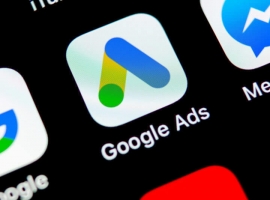For nearly a decade, pundits have been talking about the decline of advertising in terms of impressions and clicks. If you’re looking around the room, don’t –I’m talking about you, the reader, and rest assured, I’m referring to myself, too.
We see ads on every bus stop, unobfuscated building and even grocery bags. I remember when QR codes were all the rage, touted as some novel way to engage with brown paper grocery bags that were being marked with them. Thankfully, that didn’t take off. However, ad-blindness, or the over-saturation of advertising, has created downstream problems for email marketers: we, and the people we’re aiming to reach, are receiving far too much email in our inboxes.
According to a Radicati analysis, the average person receives between 120 and 130 emails per day. Ponder that for a moment. Between the massive volume of work emails, personal emails and, you guessed it, marketing emails, our eyes are saturated with copy 24/7, whether we’re actively looking for it or not.
The downfall of this inundation is that the most important bit of that copy may at times go unnoticed by both recipients and marketers. I don’t blame recipients — they certainly have their work cut out for them considering how many emails they slog through to find genuine content that genuinely engage them. Another way to think of this is how one writer put it when pontificating on the decline of joy in advertising: marketers have forgotten the pleasure principle.
Surprise and delight
We’ve all heard the phrase that marketers are challenged with surprising and delighting their customers. This couldn’t be more true for emails — email marketers not only have to surprise and delight their customers, but they have to do it in a way that compels them to make a series of micro-decisions that lead to a conversion.
So, what then is the very first opportunity for a marketer to surprise and delight the recipient of one of their digital missives? Simple: a subject line. Subject lines are like calling cards; they’re also the very embodiment of that old Head & Shoulders commercial that ends in the tagline: “you never get a second chance to make a first impression.”
Subject lines have evolved thanks to the natural evolution of the channel. As heuristic filters gave way to more sophisticated Bayesian filters, which in turn evolved into machine learning algorithms designed to understand recipient engagement on the mailbox provider side, more and more language became OK to use in subject lines. At one point, the word “free” was anathema to achieving inbox placement. Thankfully those dark ages of email marketing are mostly behind us. Subject lines are rife with “free,” “act now,” “don’t wait,” “urgent,” “hurry” and every other verb imaginable to make us feel like time is running out.
See where I’m going with this? We’ve all become desensitized to language. Some marketers are capitalizing on this and appealing to our eyes by filling whole subject lines with emojis. That’s great, but based on research my company conducted just last year following the Black Friday/Cyber Monday holiday, only three percent of senders use emoji, and subject lines with them have on average a two percent lower open rate. There are most definitely segments that will respond well to emoji but it’s hard to say which unless you’ve tested it.
Another surprising trend from this holiday data showed that subject lines that mentioned the holiday were on average five points lower in terms of unique opens. What this suggests is that recipients don’t want marketers to state the obvious. Everyone is well aware that Black Friday is when people go shopping at 3 a.m. and there are deals to be had. Rather than appeal to the obvious, focus on the unique and make that actionable and enticing.
Finding the right subject line
When crafting subject lines, don’t assume that any single one will be a winner. Rather, put them through the wringer — test as many of them as you can and be aware who you’re testing them on. A subject line that may compel me to open will most likely be very different from one that motivates my mother to open an email. Look at what’s been opened in the past and split it up into categories by segment: time-based subject lines, value props, humorous, tongue-in-cheek, etc. Creating categories around the kinds of subject lines you’ve used and how they were received will give you a solid foundation from which to begin your testing.
Once you have a set of subject lines you want to test, go ahead and execute with the understanding that you’re keeping the content of the message the same. Why, you ask? Because you want to isolate which factor is driving the opens and clicks. If you change too many things at once, you’ll find it hard to pin down what works and what is just a coincidence. We know over 50 percent of emails are opened on mobile devices; however, at least part of the other 50 percent are opened in desktop email clients like Apple Mail or Outlook and these clients have preview panes. Thus, you won’t really know which was the driver for the open: the subject line, the hero graphic or both.
Be sure to also practice restraint when crafting subject lines. Marketers are storytellers by default — many of us long-winded at that. And our research shows the most popular subject line length was seven words during the holiday season last year. However, four-word subject lines had higher engagement rates. It’s hard to be pithy and super engaging in four words, but incredibly long subject lines get clipped on mobile devices. In terms of raw characters, designers recommend 35-50 characters for subject lines to avoid having them clipped.
Keeping it real
If there’s a single piece of advice that I can impart to you, it’s this: be authentic. Authenticity leads to happier customers and a more genuine brand voice. Use your subject lines in a manner that is authentic and consistent with your brand — there is no greater disappointment than opening an email after reading a subject line and learning that the content is the complete opposite of what you were expecting.
The result of this is generally deletion, apathy toward the next email and, in worst case scenarios, hitting the spam button. There’s a mountain of great and sometimes conflicting data around subject lines, with whole schools of thought devoted to tonality, length, how to position offers, etc. Before paying short shrift to your subject lines, do a quick scan of your inbox and reflect on which you clicked on and which you deleted without hesitation. Hopefully, your own emails fall into the former and not the latter.
The post Why nothing matters more than your email’s subject line appeared first on Marketing Land.
Original article source: https://marketingland.com/feed







There are no comments